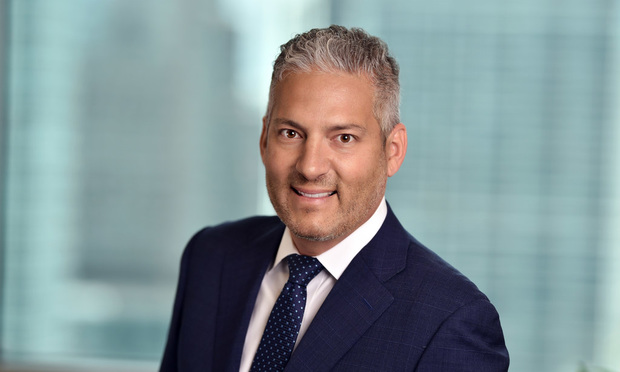 Jonathan Kurry, Huntons Andrew Kurth. Courtesy photo[/caption] The YotelPad hotel-condominium tower going up in downtown Miami — the first on the East Coast — is a $76 million step closer to fruition. YotelPad is the latest from the U.K.-based Yotel hotel brand, combining a hotel and condominiums. Units are smaller than conventional and designed with an eye toward smart, efficient use of space. The condos won't have any restrictions on short-term rentals, allowing them to be subleased or rented on a per-night basis on home-sharing websites. Miami's YotelPad will be finished in 2021 with the construction loan obtained by a Hunton Andrews Kurth team. Representing the developer, the law firm drew attorneys from across its U.S. offices to close the deal, including two Miami partners who took care of issues including environmental and geotechnical surveys and title. Partner Laurie Grasso in New York led the rest of the team that comprised partner Rori Malech in Washington and associates Carolyn Ruiz in Dallas and Michal Baum in New York. Miami partner Jonathan Kurry worked on the transaction with partner Robert Rausch on the deal that closed March 29. Terms were not disclosed. "Once we realized this was going to be a Miami project, then we've got this — not to toot my own horn — but very experienced in hospitality and condos new partner in Miami. Let's get him in the mix," said Kurry, who joined the firm a year ago. "Obviously, we did all the local issues, the local law, title and survey and construction issues that require a particularly local focus." Kurry previously was general counsel for Turnberry Associates, the Aventura-based Soffer-family real estate development company that counts Aventura Mall among its assets. The attorneys represented developer Aria Development Group LLC, based in New York and with a Miami office, and a joint venture partner, Kuwait City-based Aqarat, in securing the loan from Bank OZK. The Little Rock, Arkansas-based bank, previously the Bank of the Ozarks, has rebranded from a community bank to a regional power issuing loans nationwide. It previously issued a loan for Aria's 321 Ocean condo in Miami Beach, Kurry said.
Jonathan Kurry, Huntons Andrew Kurth. Courtesy photo[/caption] The YotelPad hotel-condominium tower going up in downtown Miami — the first on the East Coast — is a $76 million step closer to fruition. YotelPad is the latest from the U.K.-based Yotel hotel brand, combining a hotel and condominiums. Units are smaller than conventional and designed with an eye toward smart, efficient use of space. The condos won't have any restrictions on short-term rentals, allowing them to be subleased or rented on a per-night basis on home-sharing websites. Miami's YotelPad will be finished in 2021 with the construction loan obtained by a Hunton Andrews Kurth team. Representing the developer, the law firm drew attorneys from across its U.S. offices to close the deal, including two Miami partners who took care of issues including environmental and geotechnical surveys and title. Partner Laurie Grasso in New York led the rest of the team that comprised partner Rori Malech in Washington and associates Carolyn Ruiz in Dallas and Michal Baum in New York. Miami partner Jonathan Kurry worked on the transaction with partner Robert Rausch on the deal that closed March 29. Terms were not disclosed. "Once we realized this was going to be a Miami project, then we've got this — not to toot my own horn — but very experienced in hospitality and condos new partner in Miami. Let's get him in the mix," said Kurry, who joined the firm a year ago. "Obviously, we did all the local issues, the local law, title and survey and construction issues that require a particularly local focus." Kurry previously was general counsel for Turnberry Associates, the Aventura-based Soffer-family real estate development company that counts Aventura Mall among its assets. The attorneys represented developer Aria Development Group LLC, based in New York and with a Miami office, and a joint venture partner, Kuwait City-based Aqarat, in securing the loan from Bank OZK. The Little Rock, Arkansas-based bank, previously the Bank of the Ozarks, has rebranded from a community bank to a regional power issuing loans nationwide. It previously issued a loan for Aria's 321 Ocean condo in Miami Beach, Kurry said. YotelPad
YotelPad will rise on a 14,850-square-foot vacant lot at 227 NE 2nd St., sandwiched between the Metromover tracks on the west and the Vizcayne condo on the east. The 222 hotel rooms will be from the 2nd to 12th floors, and the 231 condo units will be from the 15th to 31st floors, according to the project's website. The condo units break down to 98 studios, 116 one-bedroom units and 17 with two bedrooms. A bar, restaurant and pool deck will be on the floors between the hotel and condos, and social spaces on the top floor that will include a lounge, chef's kitchen and a Pet Pad with grooming services. "This is sort of the type of project you are seeing in a lot of in places like New York and California, and Yotel has projects in London and São Paulo opening. These are not micro-units. They call them pads," Kurry said. The concept is betting on owners and renters who need more of a "pad," as in a small place to crash while they are here on a business trip or staying for a few nights while exploring nearby attractions. Studios will be 417 square feet, the one bedrooms will range from 493 to 669 square feet, and the two bedrooms will be 708 square feet. "I don't want to use the word millennial necessarily, but there are definitely people who are OK with less living space in the sense of what they own because they don't spend that much time there because they are going to go sit in the common room, they are going to sit by the pool," Kurry said, with exterior space considered part of their living environment. The only other YotelPads planned are at California's Mammoth Lake and Utah's Park City ski resorts. Miami's YotelPad reached a milestone last month with the sale of 75% of the condo units to a largely international pool of buyers, mainly from Mexico and China but also from Argentina and Colombia. Units start at $300,000, less than the asking price at many high-end towers rising in downtown Miami and the Brickell neighborhood. Construction permits are in place, Kurry said. "Miami is quickly becoming a place where space is at a premium if it's not already. You are certainly seeing micro-units are coming but more along the lines of workforce housing. This is something different. Even though it's still at a good price point, it's certainly much more design forward, much more amenity intense. Super-fast WiFi. A club with a bar and meeting spaces. Things like that," Kurry said.
'Sweet Spot'
Kurry said negotiations required finding the sweet spot between the developers' needs and the bank's flexibility. "I come to the table knowing what both sides really need, what's important to them and what's not so important to them," said Kurry, who also has represented lenders. "You kind of anticipate the kinds of things that developers like to do." For the loan to close, the bank needed to confirm details such as easements, surveys and property access. "When the lender gets involved, they are not going to let a penny out the door until they know everything is ready to go vertical and everything is in place," Kurry said. "I generally know where the parties want to end up, and we can get there pretty quickly and efficiently and not waste time negotiating things that don't really matter."
© Touchpoint Markets, All Rights Reserved. Request academic re-use from www.copyright.com. All other uses, submit a request to [email protected]. For more inforrmation visit Asset & Logo Licensing.
















